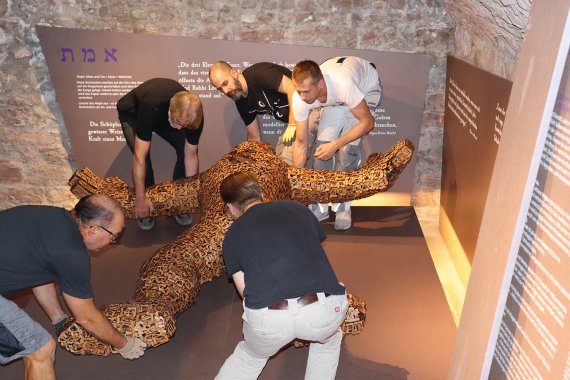
Together: an innovative Jewish community association. Flourishing between the 11th and 13th century. Scholars and buildings, traditions and personalities – still anchored in the tradition and present day Jewish worlds.

The Exhibition
The exhibition “SchUM on the Rhine - From the Middle Ages to Modernity” takes you on a journey through time to the heyday of the Jewish communities in the ShUM cities of Speyer, Worms and Mainz. Pass through the gateway to ShUM and learn more about the beginnings of the Jewish communities in Speyer, Worms and Mainz, which are among the oldest Jewish communities in Western, Central and Eastern Europe (Ashkenaz). This is where the foundations of Judaism in this region were laid between the 10th and 13th century. It was here that joint, groundbreaking legal statutes and trend-setting buildings that had an impact on the culture and identity of Ashkenazi Jewry for centuries. Immerse yourself in the history and rituals of the ShUM communities, meet wise men and women and discover the unique and extraordinary monuments. ShUM was innovative and is still fascinating. Go on a journey of discovery!
An exhibition of the City of Worms with the Jewish Museum Worms in cooperation with the State of Rhineland-Palatinate with the General Directorate for Cultural Heritage Rhineland-Palatinate (GDKE) with the participation of the ShUM-Cities Speyer, Worms, Mainz e.V.
Supported by the Foundation „Gut.für die Region“ of the Sparkasse Worms-Alzey-Ried.
The exhibition emerges …

The Exhibition site
The Rashi-House is located exactly on the same spot where the Jewish community house had stood since the late 12th century. In the 19th and 20th century, the building was used as a teaching house, for weddings and as a hospital as well as an old people‘s home for the Jewish community. From November 1938 until the end of 1942, as a “Judenhaus”, it became a transit space for Jews expelled from their homes before being deported to the German extermination camps. After 1945, the building is owned by the City of Worms, used for other purposes and demolished in 1971. Between 1980 and 1982 a new building, the present Rashi-House, is constructed. It takes up the form of the medieval building. Valuable parts of the medieval walls can still be found in the basement.
Go on a voyage of discovery through times and history!







